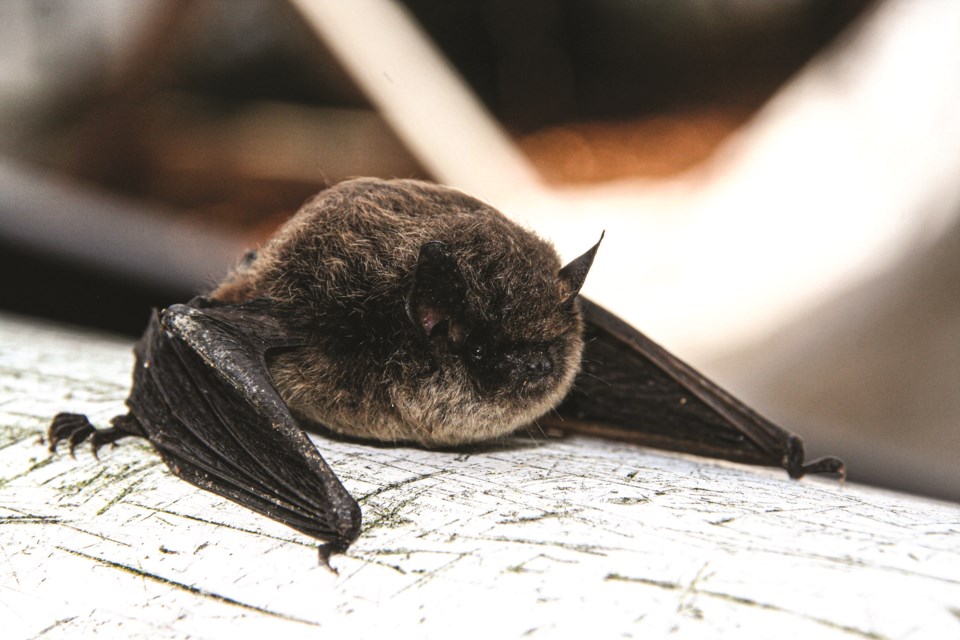Local bats are threatened by disease and local biologists are asking the community for help. Last year, the fungus that causes white-nose syndrome (WNS) was detected in B.C. for the first time. The fungus attacks bats during their winter hibernation, appearing on their wings and faces. When bats wake to clean the fungus from their skin, they use up essential energy reserves, leading to death from starvation.
Although there is no cure for white-nose syndrome, several promising treatment options are being developed, and it may be possible to mitigate the impacts of this wildlife health crisis. Increasing the number of bat reports from the public helps scientists understand how the disease might spread and affect local bat populations. Sunshine Coast residents are asked to please report any winter bat sightings, known roosts, and sick or dead bats by emailing [email protected] or calling 604-989-1007. Dead bats can be collected and tested for WNS, and reports may identify regions with unusual activity.
Some healthy bats are also occasionally active in winter, and some bats hibernate in woodpiles, sheds, or under house trim. These sleeping bats should be left alone — keep your distance, snap a photo, and report the sighting. If you must move a bat, please visit www.bcbats.ca for advice and remember to never touch a bat with your bare hands.
In partnership with the BC Community Bat Program and BC Ministry of Water, Land and Resource Stewardship, the Sunshine Coast Wildlife Project works to facilitate bat stewardship and citizen science.
They gratefully acknowledge funding support from the Habitat Conservation Trust Foundation, Forest Enhancement Society of BC, Habitat Stewardship Program, Gencon Foundation, Fish and Wildlife Compensation Program, and the Province of BC.



